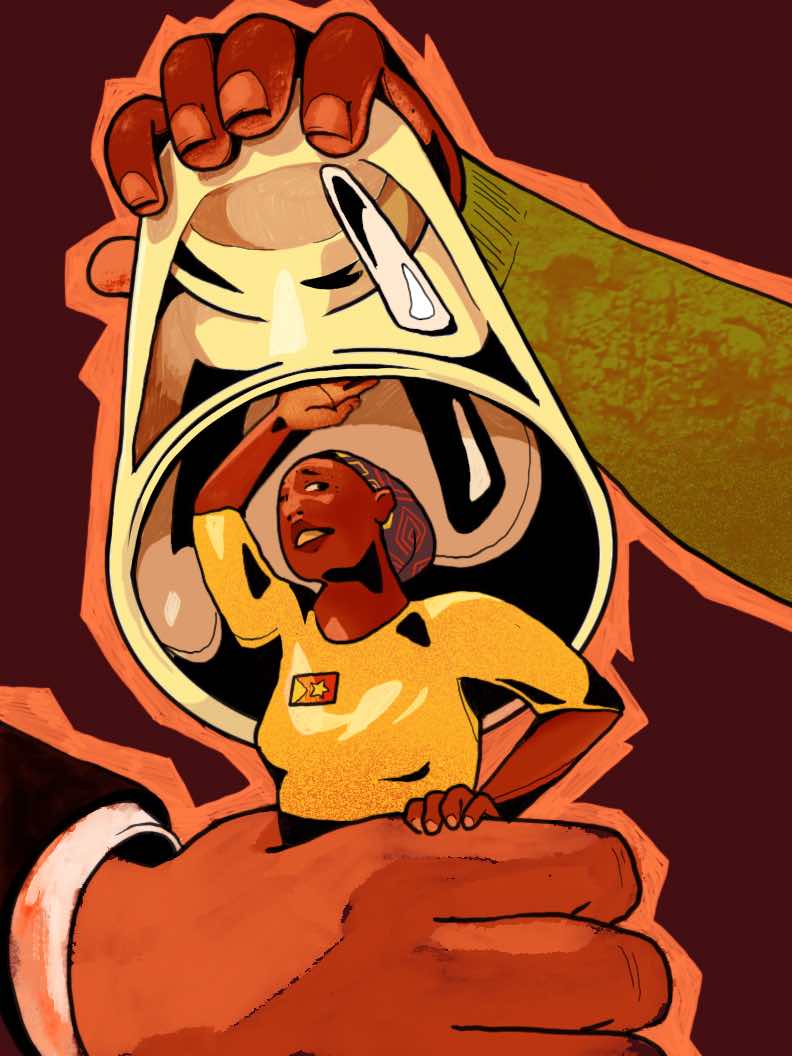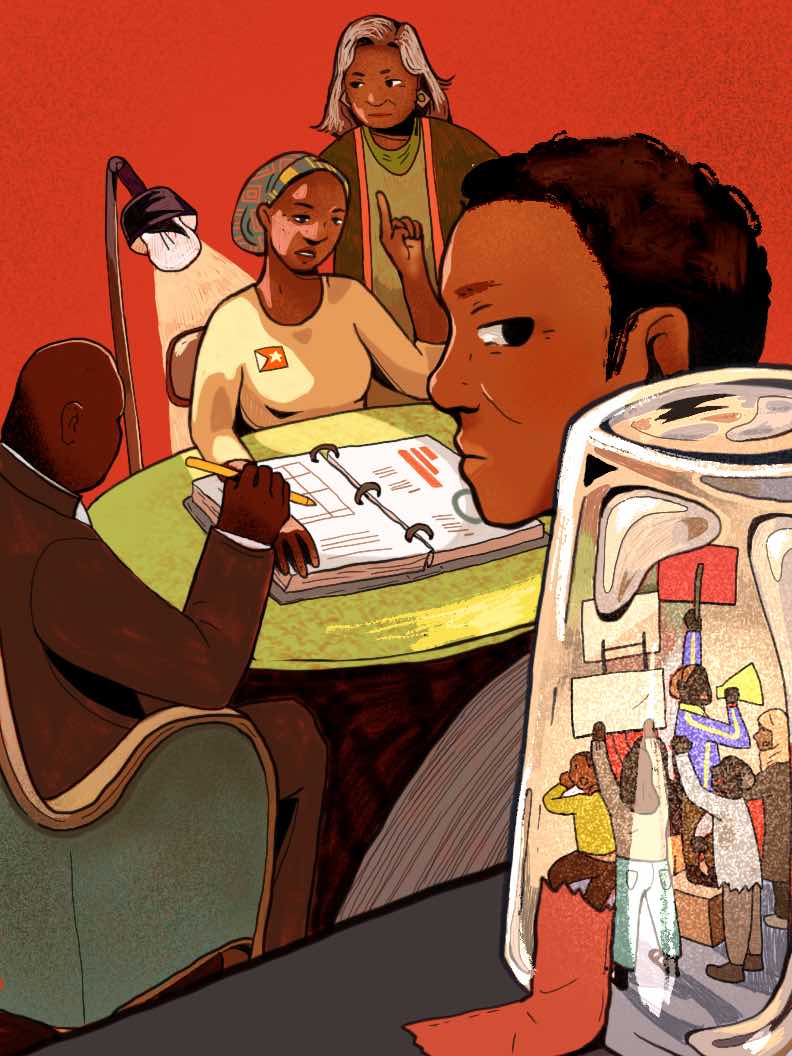How Ethiopia’s allegiance to the authoritarian development model has spurred economic progress at the expense of its population
Few countries in modern history have climbed the GDP rankings as quickly as Ethiopia has in the 21st century. Under an autocratic regime with a laser-like focus on economic development, the country has become an internationally renowned success story. But alongside economic growth, Ethiopia has been plagued by brutal repression of dissenters and simmering resentment among Ethiopia’s myriad ethnic groups. Today, a bloody civil war rages between the central government and the Tigrayan People’s Liberation Front (TPLF), an ethnic political party representing the Tigray Region in northern Ethiopia. Not only has the conflict displaced millions of Ethiopians, but it could also reverse hard-fought economic gains that the country has achieved over the past two decades.
For supporters of the authoritarian development model—a scheme of economic growth that claims that states need autocratic power to jump-start development—Ethiopia’s economic miracle is proof of the model’s success. But while concentrated power enabled the Ethiopian state to make important development decisions without being bogged down by detractors, the recent civil war and ethnic strife reveal that authoritarianism comes at a bloody cost. The Ethiopian case thus demonstrates that trusting autocracy to deliver long-term growth is a gamble, especially in ethnically divided states.
Authoritarian government has long been the norm in Ethiopia after a military coup in 1974 marked the end of the country’s monarchy. The Derg, a repressive military dictatorship, was established shortly thereafter, spurring ethnic-based political organization and fueling domestic resentment. In 1991, a revolutionary struggle led by the Ethiopian People’s Revolutionary Democratic Front (EPRDF), a multiethnic coalition, overthrew the Derg and formed the Federal Democratic Republic of Ethiopia.
The Tigrayan leader Meles Zenawi then became prime minister, and Ethiopia turned to ethnic federalism to assuage interethnic strife. Under this arrangement, Ethiopia’s ethnically defined regions had broad autonomy over their internal affairs, but sacrificed all central power to the EPRDF-led government. Although the EPRDF was nominally multiethnic, the TPLF held the most sway in the coalition, despite Tigrayans only comprising around 5 percent of the population. In 2018, the EPRDF coalition dissolved when Prime Minister Abiy Ahmed—of mixed Oromo and Amhara descent—formed the Prosperity Party in an attempt to reject ethnic federalism. Refusing to join the new coalition, the TPLF mobilized against the new government. Now, a civil war rages.
Zenawi’s top-down developmental strategy, which the EPRDF called “Revolutionary Democracy,” sowed the seeds of anti-state rhetoric in Ethiopia. In his paper “States and Markets: Neoliberal Limitations and the Case for a Developmental State,” the late prime minister warned that liberal democracy would transform the central state “into an arena of warring individuals with nothing to hold them together.” Given Ethiopia’s destitution, Zenawi argued, the stakes were too high to tolerate infighting; the executive thus required minimal restraint to pursue its economic agenda. While Zenawi remained committed to ethnic federalism as prime minister, he was eager to inject ruling party influence into all public institutions. Party cadres were forced to engage in “self-criticism” sessions, which enabled leaders to purge dissenting government officials. Leaders created new methods to surveil local communities, identify potential troublemakers, and spread propaganda. Ballots were stuffed to ensure EPRDF victory. Worse, journalists who questioned party policy were often imprisoned and tortured.

Using repression to build consensus initially seemed to work for Zenawi. True to its Marxist roots, the EPRDF was wary of the private sector, instead pinning Ethiopia’s development on public infrastructure investment, low interest rates, and state-rationed credit. Such a state-centric growth strategy often requires the government to impose its will on the people, since large infrastructural projects tend to disrupt rural livelihoods. As such, a more liberal, less autocratic Ethiopian state may not have seen the same level of GDP growth.
But Zenawi ignored how this repression would impact interethnic relations. The EPRDF derived its ruling legitimacy in part from its emphasis on ethnic federalism, a practice that turned ethnicity into the most salient political identifier in Ethiopia. Even as the leader of a multiethnic coalition, Zenawi advanced the narrative of Tigrayan oppression throughout his rule. When the EPRDF quashed challenges to its authority, the disempowered groups often viewed it as ethnic repression by a privileged Tigrayan minority. In turn, the government’s attempts to urbanize farmland and the protests by Oromo farmers that followed became an ethnic struggle rather than just a policy debate. The accumulation of similar episodes contributed to the general resentment that ended EPRDF rule, blackballed the TPLF from power, and sparked the current civil war. Yet an EPRDF that better accommodated dissenting opinions, but still maintained its authority over developmental matters, could have both fostered growth and averted civil war.
The EPRDF’s authoritarian development model also increased the spoils to be won by successive governments, further fueling today’s conflict. In his infamous essay on the developmental state, Zenawi contended that Ethiopia ought to “monopolize rents and allocate them strategically for value creation over the long term.” This principle lent the EPRDF a strong grip over economic resources. Again, without such a policy, building expensive infrastructure necessary to jumpstart development—like the Gibe III Dam, which doubled Ethiopia’s electricity production—might have taken decades. In a country with strong democratic norms, constraints on executive power, and institutions that foster power-sharing, such a strategy might work. The same could be said about a country without such institutions but with a united populace. Ethiopia’s ethnicization, however, once again makes it an exception. Government monopolization of rents in the context of ethnic division and Tigrayan dominance has inevitably led to disputes over the control of economic resources, stoking the current strife.
Consider the example of the Endowment Fund for the Rehabilitation of Tigray (EFFORT). A massive conglomerate of businesses operating in Tigray, EFFORT began with the noble intention of rehabilitating the battered region after the civil war against the Derg. While the TPLF also provided seed money for similar conglomerates in other regions, these contributions pale in comparison to those received by EFFORT. The businesses that operate under EFFORT are now major monopolists in Ethiopia’s economy that primarily employ Tigrayans. Critics have alleged that EFFORT received favorable treatment owing to the TPLF’s dominance in Ethiopia. For example, an explosive report in 2004 alleged that the state-owned Commercial Bank of Ethiopia extended a massive loan to EFFORT with no collateral, then subsequently canceled its debt. To opponents of Tigrayan rule, this was yet another example of how the TPLF’s grip on power enriched a minority ethnic group at the expense of everyone else.
The extent of EFFORT’s corruption remains unclear but because the conglomerate exercised such immense influence under the TPLF government, it has likely entrenched feelings of resentment towards Tigrayans. Displacing TPLF dominance would therefore enable other ethnic groups to win power within the government. For the TPLF, which now reasonably fears that its share of the economic pie might diminish, warfare has become an attractive option. Once again, non-Tigrayans’ discontent under developmental authoritarianism has bubbled into violent conflict.
The unenviable responsibility to ease conflict and promote development now lies in the hands of Prime Minister Abiy Ahmed. To do so, Ahmed must acknowledge that ethnonationalism is the linchpin of TPLF ideology. Rejecting ethnic federalism will only spark further conflict between Tigray and the central state. He must also take a hard line against human rights abuses on all sides to minimize any belief— especially among Tigrayans—that he is biased toward specific ethnic groups.
Assuaging the TPLF is a crucial first step. But Ahmed must also alter Ethiopia’s developmental strategy if post-conflict peace is to last. To begin, he must oppose all forms of corruption and rent-seeking, regardless of ethnicity. Doing so will assure the population that he is not favoring one group at the expense of others, thus easing ethnic tensions and making development seem less like a zero-sum game. Second, Ahmed must incorporate diverse voices into the decision-making processes for large, dislocating development projects. Market liberalization and democracy in Ethiopia will take time—but in the short term, taking these steps may help Ahmed put Ethiopia back on a trajectory of growth and peace.
